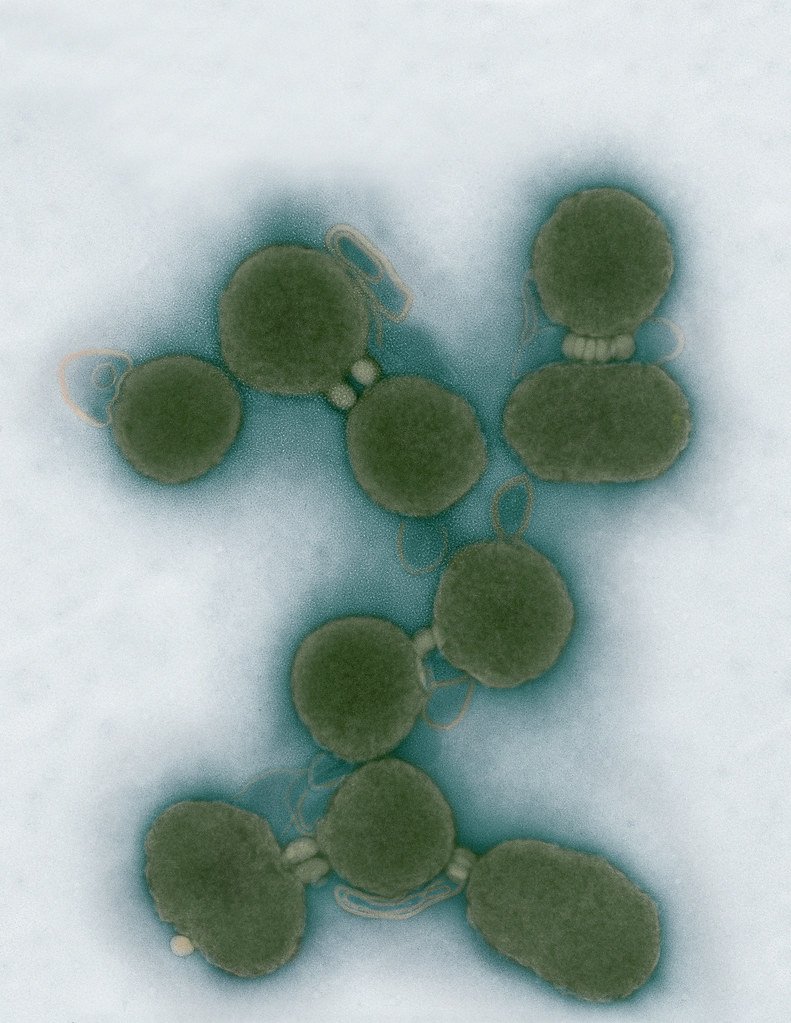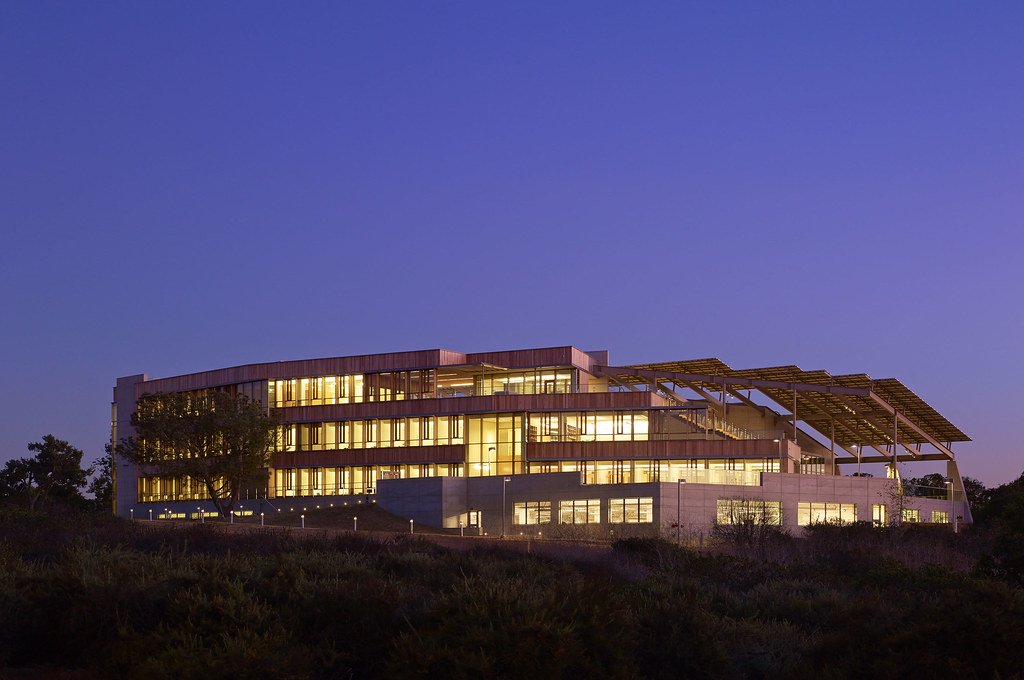Media Center
Phytoplankton Genetically Sequenced at Sea for the First Time
Viking’s Initiative with UC San Diego’s Scripps Institution of Oceanography and J. Craig Venter Institute Aims to Provide Better Understanding of the “World’s Lungs”
Tae Seok Moon, Ph.D. and Nan Zhu, Ph.D. join J. Craig Venter Institute faculty
JCVI continues to actively recruit faculty to expand core research areas, including human health and synthetic biology
Groundbreaking study reveals oral microbiome’s role in immune response and COVID-19 severity
Newly developed AI model shows that saliva is a better predictor of COVID-19 severity than existing blood tests
Scientists develop method to efficiently construct single-copy human artificial chromosomes (HACs)
This new tool will allow scientists to work in mammalian systems in ways only previously available in bacteria and yeast
HACs have wide potential research applications to synthetic biologists and may eventually aid in delivering DNA in clinical applications
With combined funding of 3,000,000 euros the BBVA Foundation’s Fundamentos Program supports five innovative exploratory research projects on core questions in basic science
JCVI work supported through The Physical Basis of Cell Division in Minimal and Synthetic cells (MINCELL) Fundamentos Program
Opentrons Announces New Robotics Education Initiative Demonstrating Commitment to Laboratory Automation for Students
12th Build-a-Cell Workshop hosted at J. Craig Venter Institute in La Jolla
The workshop will take place March 29, 2024 with registration closing March 19
New LongCOVID research launched by PolyBio’s global consortium of scientists
Funding will deepen research on the persistence of the SARS-CoV-2 virus in LongCOVID patients and launch new clinical trials
J. Craig Venter Institute contracted by the Centers for Disease Control and Prevention to rapidly construct synthetic influenza genes
Genes will be used to help develop seasonal and pandemic vaccines, improving response time and vaccine efficacy
Coastal upwelling regions threatened by increased ocean acidification
Increased acidification shown to limit iron availability, a critical element for the survival of phytoplankton, the foundation of the oceanic food web
Pages
Media Contact
Related
Supporting earthquake relief efforts in Turkey and Syria
We are devastated by the recent earthquakes which have caused enormous destruction in Turkey and Syria and encourage all who are able to support organizations involved in relief efforts. Locally, the American Turkish Association of Southern California (ATASC) is raising funds and...
Leg 2: exploring the Mid-Cayman Spreading Center
Editor’s note JCVI Staff Scientist Erin Garza, Ph.D., was selected to embark on a unique research expedition aboard the HOV Alvin submersible, a crewed deep-ocean research vessel owned by the United States Navy and operated by the Woods Hole Oceanographic Institution, that has brought...
The dive: searching for deep ocean plastics in the Puerto Rico Trench
Editor’s note JCVI Staff Scientist Erin Garza, Ph.D., was selected to embark on a unique research expedition aboard the HOV Alvin submersible, a crewed deep-ocean research vessel owned by the United States Navy and operated by the Woods Hole Oceanographic Institution, that has brought...
Leg 1: headed to an unexplored area of the Puerto Rico Trench
Editor’s note JCVI Staff Scientist Erin Garza, Ph.D., was selected to embark on a unique research expedition aboard the HOV Alvin submersible, a crewed deep-ocean research vessel owned by the United States Navy and operated by the Woods Hole Oceanographic Institution, that has brought...
My journey begins: heading to the Puerto Rico Trench in search of deep-sea plastic
Editor’s note JCVI Staff Scientist Erin Garza, Ph.D., was selected to embark on a unique research expedition aboard the HOV Alvin submersible, a crewed deep-ocean research vessel owned by the United States Navy and operated by the Woods Hole Oceanographic Institution, that has brought...
Celebrating pioneers in science and medicine this Black History Month
Happy Black History Month! At JCVI, we believe in the importance of celebrating scientific trailblazers, particularly those who made groundbreaking advancements all while overcoming overt racism. Here, we have highlighted the stories and achievements of some of the most accomplished Black...
Eleven female scientists whose research changed the world
Today is Women’s Equality Day and to celebrate, we are highlighting accomplishments made by women in science and technology. While these scientists were influential in advancing their fields and championing the fair treatment of women in science, currently women only make up 28% of the...
Complete Genome Sequence of Strain JB001, a Member of Saccharibacteria Clade G6
The complexity and diversity of the microbial world was not fully understood until sequencing technology allowed us to study microbes without growing them in the lab. An important family of bacteria, Saccharibacteria (formerly called TM7), is one of the many bacteria of interest which were...
Scientific Pioneers
JCVI recognizes trailblazers in scientific history, particularly those who made advancements all while surpassing gender, ethnic, and other societal barriers, creating opportunity for the next generation of scientists. These historical figures not only helped advance our understanding of human...
Women’s History Month: Tu Youyou
Tu Youyou is a Chinese pharmaceutical chemist whose unique training in the classification of medical plants and their active ingredients resulted in a discovery that has led to the survival and improved health of millions of people. In 1967, at the height of the Vietnam War, malaria spread by...
Pages
Public Health is the Next Big Thing at UC San Diego
Researchers have swapped the genome of gut germ E. coli for an artificial one
By creating a new genome, scientists could create organisms tailored to produce desirable compounds
Genetically modified bacteria-killing viruses used on patient for first time
Hair claimed to belong to Leonardo da Vinci to undergo DNA testing
Critics, however, argue that this effort is flawed from the beginning
Students learn about genomics, a life in science, at J. Craig Venter Institute
Pages
Logos
The JCVI logo is presented in two formats: stacked and inline. Both are acceptable, with no preference towards either. Any use of the J. Craig Venter Institute logo or name must be cleared through the JCVI Marketing and Communications team. Please submit requests to info@jcvi.org.
To download, choose a version below, right-click, and select “save link as” or similar.
Images
Following are images of our facilities, research areas, and staff for use in news media, education, and noncommercial applications, given attribution noted with each image. If you require something that is not provided or would like to use the image in a commercial application please reach out to the JCVI Marketing and Communications team at info@jcvi.org.
Human Genome
Synthetic Cell

J. Craig Venter, Ph.D. and Hamilton O. Smith, M.D.
Credit: J. Craig Venter Institute

Hamilton O. Smith, M.D. and Clyde A. Hutchison III, Ph.D.
Credit: J. Craig Venter Institute

J. Craig Venter, Ph.D.
Credit: Brett Shipe / J. Craig Venter Institute

Clyde A. Hutchison III, Ph.D.
Credit: J. Craig Venter Institute

John Glass, Ph.D.
Credit: J. Craig Venter Institute

Dan Gibson, Ph.D.
Credit: J. Craig Venter Institute

Carole Lartigue, Ph.D.
Credit: J. Craig Venter Institute

JCVI Synthetic Biology Team
Credit: J. Craig Venter Institute

Aggregated M. mycoides JCVI-syn1.0
Negatively stained transmission electron micrographs of aggregated M. mycoides JCVI-syn1.0. Cells using 1% uranyl acetate on pure carbon substrate visualized using JEOL 1200EX transmission electron microscope at 80 keV. Electron micrographs were provided by Tom Deerinck and Mark Ellisman of the National Center for Microscopy and Imaging Research at the University of California at San Diego.

Dividing M. mycoides JCVI-syn1.0
Negatively stained transmission electron micrographs of dividing M. mycoides JCVI-syn1.0. Freshly fixed cells were stained using 1% uranyl acetate on pure carbon substrate visualized using JEOL 1200EX transmission electron microscope at 80 keV. Electron micrographs were provided by Tom Deerinck and Mark Ellisman of the National Center for Microscopy and Imaging Research at the University of California at San Diego.

Scanning Electron Micrographs of M. mycoides JCVI-syn1
Scanning electron micrographs of M. mycoides JCVI-syn1. Samples were post-fixed in osmium tetroxide, dehydrated and critical point dried with CO2 , then visualized using a Hitachi SU6600 scanning electron microscope at 2.0 keV. Electron micrographs were provided by Tom Deerinck and Mark Ellisman of the National Center for Microscopy and Imaging Research at the University of California at San Diego.

Mycoplasma mycoides JCVI-syn1.0
Credit: J. Craig Venter Institute

The Assembly of a Synthetic M. mycoides Genome in Yeast
Credit: J. Craig Venter Institute

M. mycoides JCVI-syn 1.0 and WT M. mycoides
Credit: J. Craig Venter Institute

Creating Bacteria from Prokaryotic Genomes Engineered in Yeast
Credit: J. Craig Venter Institute
See more on the first self-replicating synthetic bacterial cell.
Minimal Cell
Leadership

J. Craig Venter, Ph.D.
Credit: Brett Shipe / J. Craig Venter Institute

Sanjay Vashee, Ph.D.
Credit: J. Craig Venter Institute

John Glass, Ph.D.
Credit: J. Craig Venter Institute
Scientists in the Lab
JCVI La Jolla Lab (Exterior)

J. Craig Venter Institute, La Jolla (building exterior)
North facade at dusk. Nick Merrick © Hedrich Blessing Photographers.

J. Craig Venter Institute, La Jolla (building exterior)
South facade from soccer field. Nick Merrick © Hedrich Blessing Photographers.

J. Craig Venter Institute, La Jolla (building exterior)
Northwest view. Nick Merrick © Hedrich Blessing Photographers.

J. Craig Venter Institute, La Jolla (building exterior)
Northeast view of main entrance. Nick Merrick © Hedrich Blessing Photographers.

J. Craig Venter Institute, La Jolla (building exterior)
East facing main entrance at dusk. Nick Merrick © Hedrich Blessing Photographers.

J. Craig Venter Institute, La Jolla (building exterior)
East facing main entrance. Nick Merrick © Hedrich Blessing Photographers.

J. Craig Venter Institute, La Jolla (building exterior)
Building main entrance. Nick Merrick © Hedrich Blessing Photographers.

J. Craig Venter Institute, La Jolla (building exterior)
JCVI La Jolla north facade. Nick Merrick © Hedrich Blessing Photographers.

J. Craig Venter Institute, La Jolla (building exterior)
JCVI La Jolla north facade detail. Nick Merrick © Hedrich Blessing Photographers.

J. Craig Venter Institute, La Jolla (building exterior)
Rock garden in courtyard dusk. Nick Merrick © Hedrich Blessing Photographers.

J. Craig Venter Institute, La Jolla (building exterior)
Rock garden in courtyard. Nick Merrick © Hedrich Blessing Photographers.

J. Craig Venter Institute, La Jolla (building exterior)
Rock garden in courtyard. Nick Merrick © Hedrich Blessing Photographers.

J. Craig Venter Institute, La Jolla (building exterior)
People at courtyard tables. Nick Merrick © Hedrich Blessing Photographers.

J. Craig Venter Institute, La Jolla (building exterior)
2nd floor deck. © Tim Griffith.

J. Craig Venter Institute, La Jolla (building exterior)
Looking west at dusk. Nick Merrick © Hedrich Blessing Photographers.

J. Craig Venter Institute, La Jolla (building exterior)
First floor plaza looking south. Nick Merrick © Hedrich Blessing Photographers.

J. Craig Venter Institute, La Jolla (building exterior)
East main entrance closeup. Nick Merrick © Hedrich Blessing Photographers.

J. Craig Venter Institute, La Jolla (building exterior)
Stairs in courtyard. Nick Merrick © Hedrich Blessing Photographers.

J. Craig Venter Institute, La Jolla (building exterior)
Detail of southwest corner. Nick Merrick © Hedrich Blessing Photographers.

J. Craig Venter Institute, La Jolla (building exterior)
Sunset off 3rd floor deck. © Tim Griffith.

J. Craig Venter Institute, La Jolla (building exterior)
From northwest at dusk. Nick Merrick © Hedrich Blessing Photographers.

J. Craig Venter Institute, La Jolla (building exterior)
Photovoltaics looking west towards ocean. Nick Merrick © Hedrich Blessing Photographers.